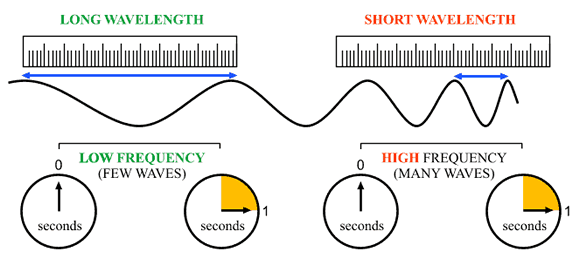A global positioning satellite transmits a radio wave with a wavelength of 19 cm. What is the frequency of the radio wave?
1 Answer
Explanation:
As you know, frequency and wavelength have an inverse relationship described by the equation
#color(blue)( lamda * nu = c)" "# , where
In simple terms, the inverse relationship that exists between frequency and wavelength tells you that high frequency waves will have short wavelengths, and low frequency waves will have long wavelengths.

The wavelength used by the satellite fall in the relatively long category, which means that you can expect it to have a relatively high frequency.
Before doing any calculations, notice that the speed of light is given in meters per second. This means that you will need to convert the wavelength of the wave from centimeters to meters in order to make sure that the units cancel out.
So, plug your values into the equation and solve for
#nu = c/(lamda) = (3 * 10^(8) color(red)(cancel(color(black)("m"))) "s"^(-1))/(19 * 10^(-2)color(red)(cancel(color(black)("m")))) = 1.6 * 10^(9)"s"^(-1)#
As you know
#"s"^(-1) = 1/"s" = "Hz"#
which means that your wave will have a frequency of
#nu = color(green)(1.6 * 10^(9)"Hz")#

